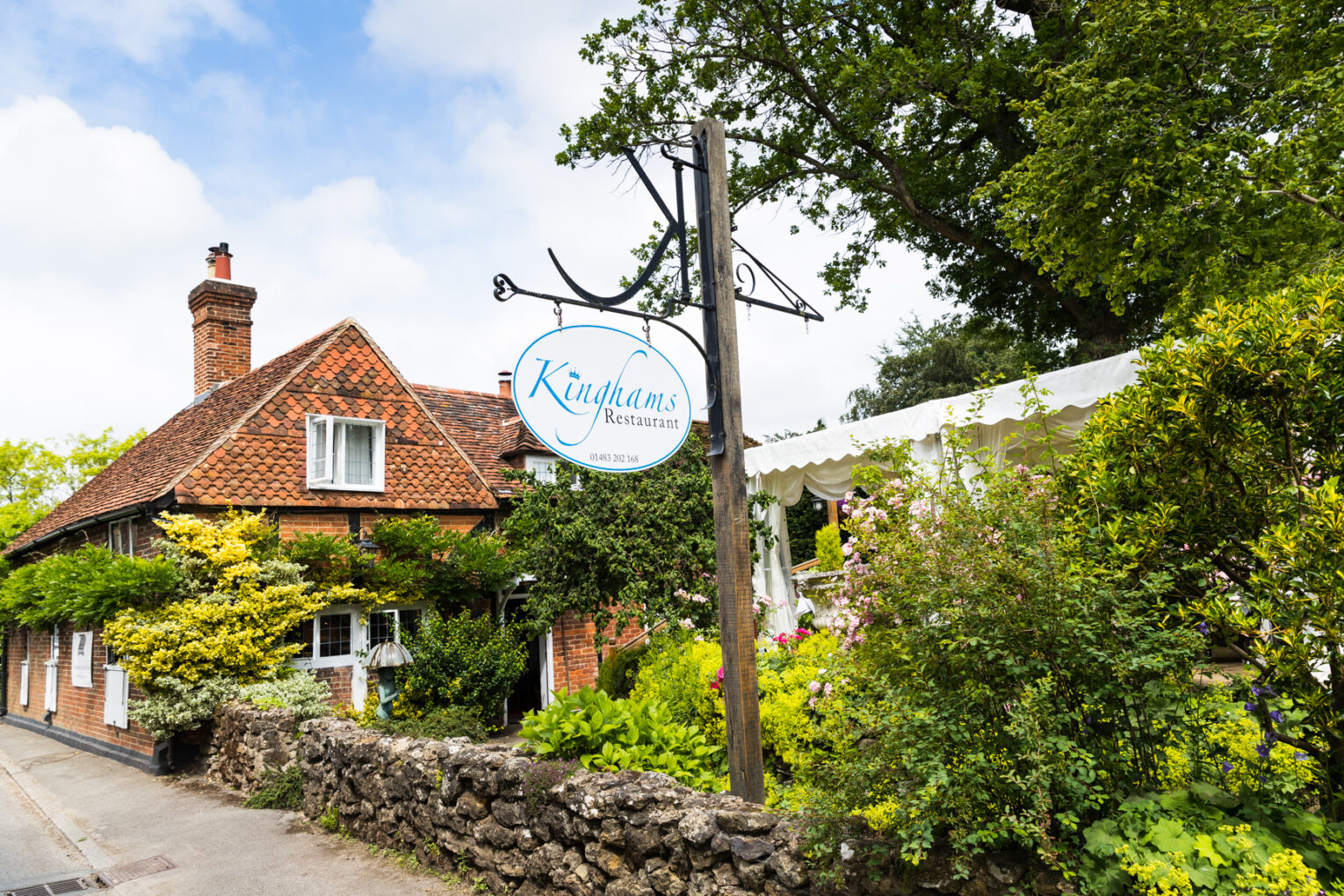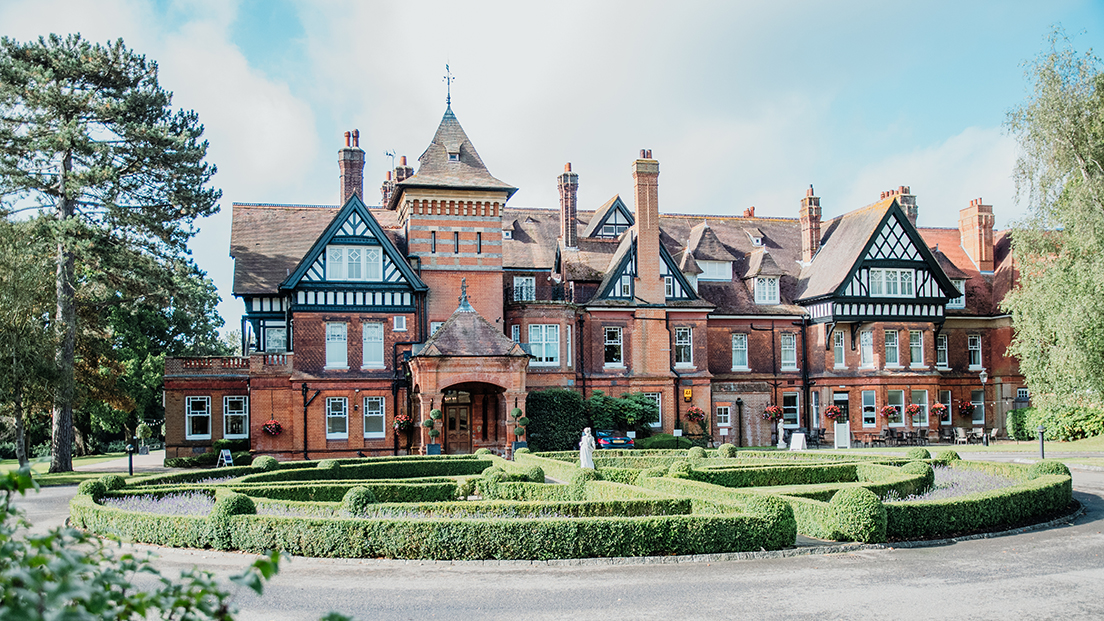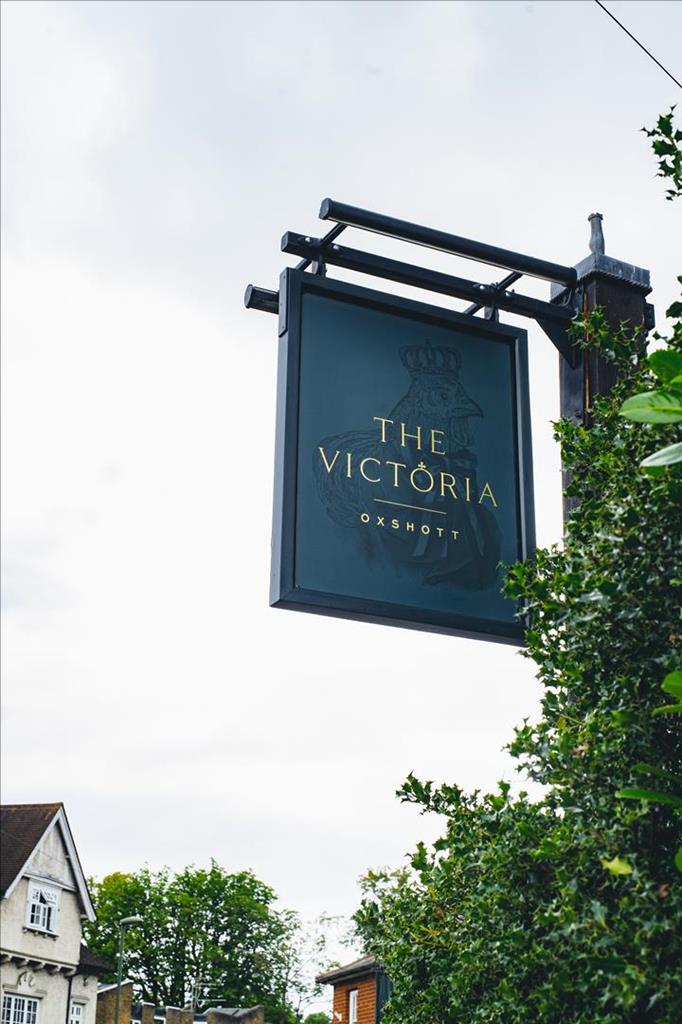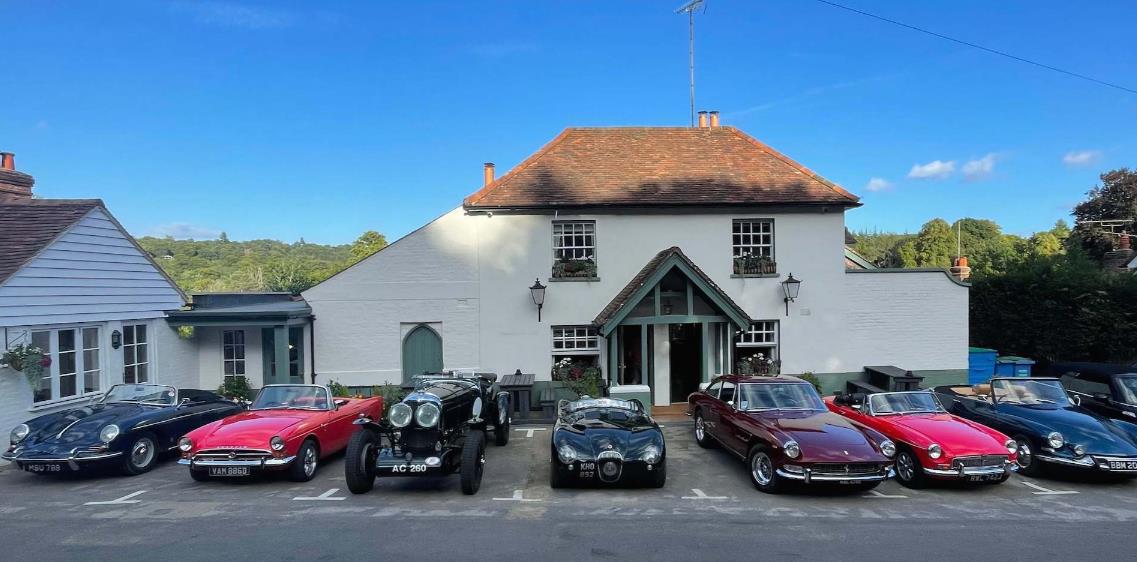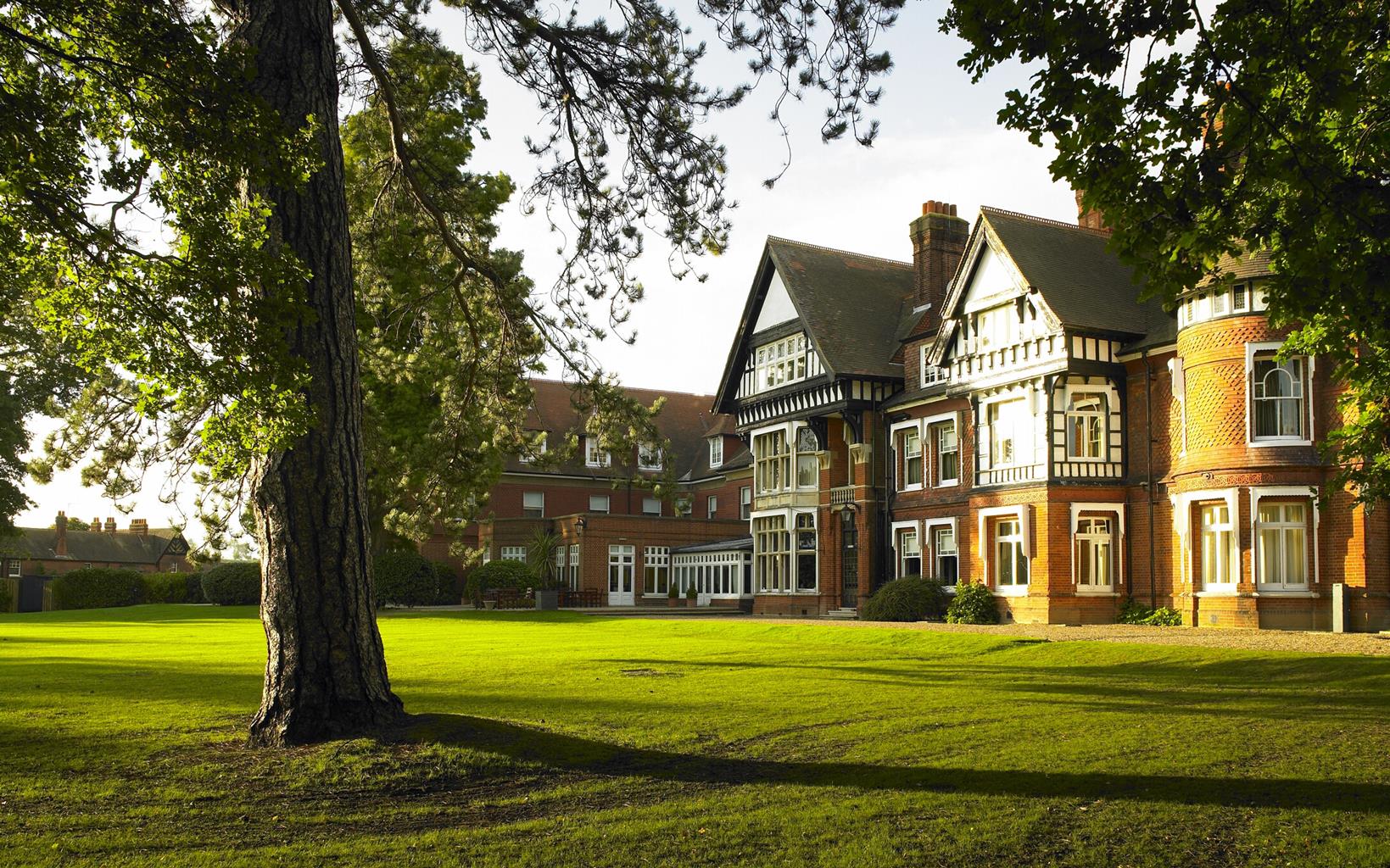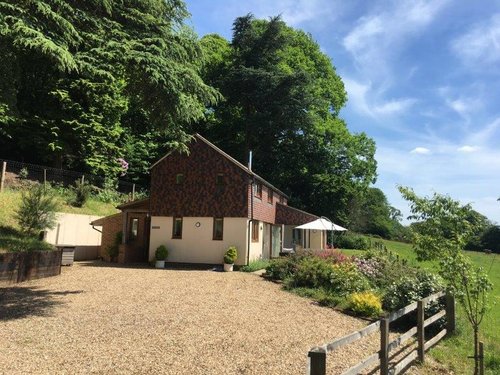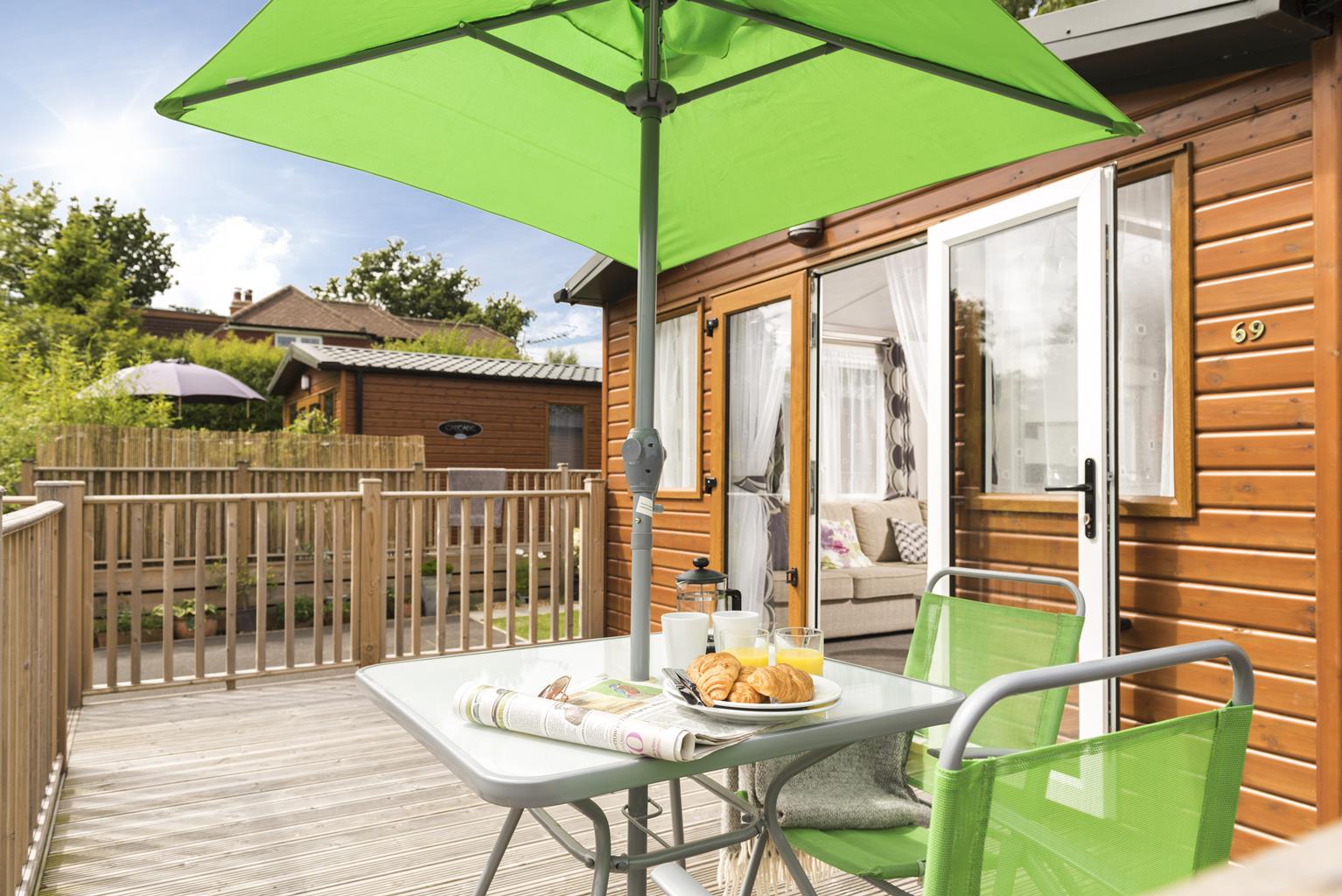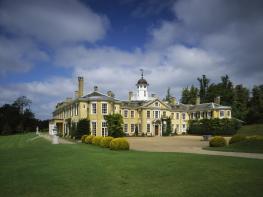Tucked away in a tranquil village in the Surrey Hills, The Kings Head offers three very comfy…
The Polesden Lacey Estate

A woodland circuit around a great country house, once a favourite with high society.
4.4 miles (7.1kms)
About the walk
To say that the history of Polesden Lacey is the history of the British monarchy through the early decades of the 20th century is, perhaps, overstating things. Nevertheless, in the years before World War II the royal family’s footfalls often echoed within these sumptuous walls. Even if you don’t step beyond Polesden Lacey’s main gates, there’s plenty of opportunity to see the house and grounds as you weave your way around the estate. Soon after the start of the walk you’ll get a stunning panorama across the terrace and formal lawns to the colonnaded south front of the house, and you’ll be glad of a pair of binoculars here. A little further on, you’ll dive under the thatched bridge linking the formal gardens to the summer house and the old kitchen garden, and pass the entrance to Home Farm House. Then comes the main entrance at North Lodge, before you turn south and drop under the balustraded bridge that carries the drive from Chapel Lane.
Polesden reborn
Late in the 18th century, the dramatist Richard Brinsley Sheridan made his home at Polesden Lacey. Although he thought that it was ‘the nicest place, within prudent distance of town, in England’, the house was pulled down after his death. In 1823 a new Regency villa arose on the site, and this building now forms the core of the modern house. The Hon. Ronald and Mrs Greville bought Polesden Lacey in 1906, extended and remodelled the house and its grounds, and set about transforming their new home into a focus of high society.
Royal romances
The couple were not exactly without influence. King Edward VII was an intimate friend, and the cream of Edwardian aristocracy was drawn to Polesden Lacey by the stimulating company and Mrs Greville’s impeccable hospitality. The royal family were frequent visitors throughout the inter-war years and the Duke and Duchess of York – later King George VI and Queen Elizabeth, the Queen Mother – came here for part of their honeymoon in 1923. The Prince of Wales was a particular favourite of Mrs Greville’s but, by the mid-1930s, his liaison with the American divorcee Mrs Wallis Simpson was causing speculation on both sides of the Atlantic. When George V died in 1936 and the new King declared his intention of marriage, it unleashed a constitutional storm that led to his abdication. Time was also running out for Polesden Lacey. Mrs Greville was ageing, and she bequeathed her home to the National Trust in 1942.
Walk directions
Cross the road from the car park, turn left and walk for 200yds (182m) along the broad roadside verge. Turn right just beyond the tile-hung Fox Cottages, where two public footpaths with metal barriers meet the road. Take the lefthand path through the woods and, ignoring all turnings, follow it down into the valley and at a T-junction turn left to pass a barrier. Cross over another track and up the other side of the valley. Just beyond a wooden gate, turn left. Continue to the gravelled forest track 100yds (91m) further on, and turn right, passing beside a metal barrier across the track. A little further on you’ll pass a bench on your left, followed by another on your right where you can enjoy a great view of Polesden Lacey, and a third bench, opposite the NT Yewtree Farm Orchard sign. Notice the massive estate water tower sticking up through the trees, just to the left of the main house.
Follow the gravelled track as it winds past Yewtree Farm; then, 150yds (137m) beyond the farm, fork left. Follow the signposted bridleway across a low causeway until it climbs to meet a tarmac estate road. Turn left and go under a wooden bridge, and then under a thatched timber footbridge. As you pass the entrance to Home Farm House look half left across the open field. On the far horizon you’ll see a long, low white building – and on a clear day you’ll be able to pick out the jets landing in front of it at Heathrow. Bear gently right past the entrance drive to Polesden Lacey, and continue on to Polesden Road. Walk right to the end of the broad, grass verge on the right-hand side of the road; then, 60yds (55m) further on, turn right down a waymarked bridleway (Connicut Lane) towards the youth hostel, Tanner’s Hatch.
The track is relatively easy to follow. It zig-zags right and left into Freehold Wood, then dives under a stone-arched bridge. Continue down the sunken way, then keep ahead at the blue waymarker post at the bottom of the hill. Stay on this path as it bears right, to climb up through the woods to Tanner’s Hatch.
Bear left at the youth hostel, following the NT sign for the Ranmore Common Walk, and shortly after follow the yellow-waymarked gravel track as it climbs up gently but steadily all the way back to Ranmore Common Road. Turn left for the last 200yds (182m) back to the car park.
Additional information
Woodland and farm tracks
Remote wooded valleys around Polesden Lacey Estate
Excellent for dogs; keep on lead near sheep and cattle
OS Explorer 146 Dorking, Box Hill & Reigate
National Trust Denbies Hillside car park on Ranmore Common Road
Toilets at Polesden Lacey (NT) for visitors only
WALKING IN SAFETY
Read our tips to look after yourself and the environment when following this walk.
Find out more
Also in the area
About the area
Discover Surrey
Surrey may be better known for its suburbia than its scenery, but the image is unjust. Over a quarter of the county’s landscapes are official Areas of Outstanding Natural Beauty, and along the downs and the greensand ridge you can gaze to distant horizons with hardly a building in sight. This is one of England’s most wooded counties, and has more village greens than any other shire. You’ll find sandy tracks and cottage gardens, folded hillsides and welcoming village inns. There’s variety, too, as the fields and meadows of the east give way to the wooded downs and valleys west of the River Mole.
Of course there are also large built-up areas, mainly within and around the M25; but even here you can still find appealing visits and days out. On the fringe of Greater London you can picnic in Chaldon’s hay meadows, explore the wide open downs at Epsom, or drift idly beside the broad reaches of the stately River Thames. Deep in the Surrey countryside you’ll discover the Romans at Farley Heath, and mingle with the monks at England’s first Cistercian monastery. You’ll see buildings by great architects like Edwin Lutyens and Sir George Gilbert Scott, and meet authors too, from John Donne to Agatha Christie.
Nearby stays
Restaurants and Pubs
Nearby experiences
Recommended things to do
Why choose Rated Trips?
Your trusted guide to rated places across the UK
The best coverage
Discover more than 15,000 professionally rated places to stay, eat and visit from across the UK and Ireland.
Quality assured
Choose a place to stay safe in the knowledge that it has been expertly assessed by trained assessors.
Plan your next trip
Search by location or the type of place you're visiting to find your next ideal holiday experience.
Travel inspiration
Read our articles, city guides and recommended things to do for inspiration. We're here to help you explore the UK.




